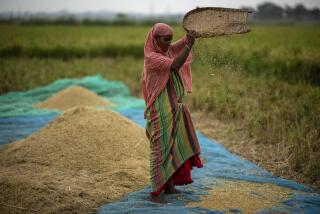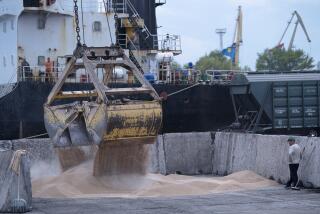Grain, Other Futures Soar
Speculation that radiation from the Soviet nuclear accident may have damaged Russian farms sent grain, soybean and livestock prices soaring on U.S. futures exchanges.
However, a senior U.S. government meteorologist, Norton D. Strommen, said the wind, since the time of the accident on Saturday, has mostly been blowing into the northwest, away from the major winter wheat area.
“At this time, certainly the plume has had a minimal impact” on Soviet crops, he said.
Ed Cook, an Agriculture Department economist, said the radioactive plume from the accident mainly blew over Byelorussia and the Baltic states.
This area, he said, grows mainly rye and spring barley for animal feed, sugar beats, some spring wheat and animal forage.
It also produces 13% of the Soviet Union’s milk and 11% to 12% of its meat.
Strommen and Cook said not enough is known about the duration of any nuclear fallout or its intensity to tell if the farmland or its animals were dangerously contaminated and what that might mean for U.S. exports.
More to Read
Inside the business of entertainment
The Wide Shot brings you news, analysis and insights on everything from streaming wars to production — and what it all means for the future.
You may occasionally receive promotional content from the Los Angeles Times.










